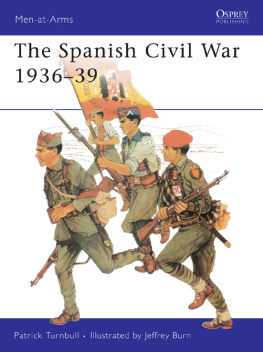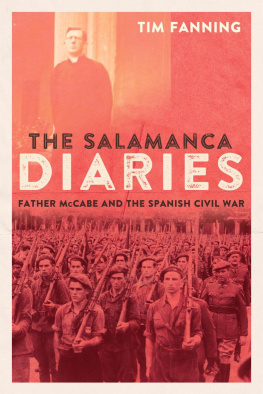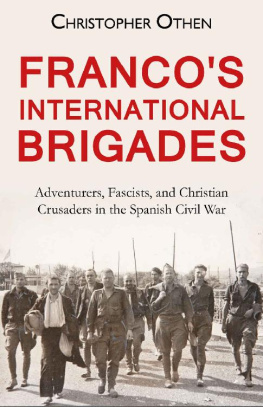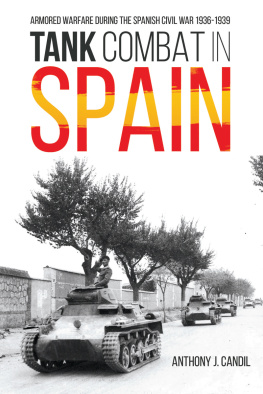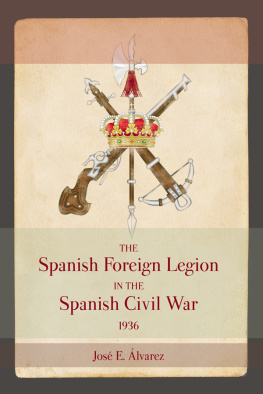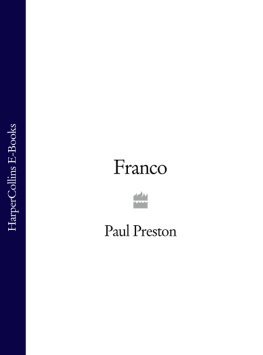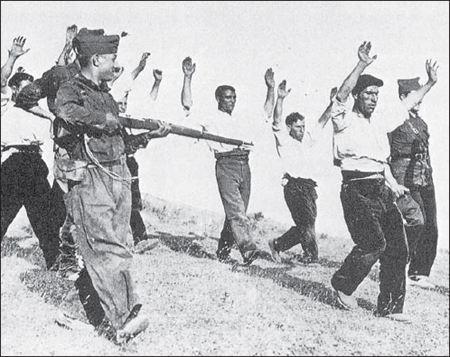Men-at-Arms 74
The Spanish Civil War 193639
Patrick Turnbull Illustrated by Jeffrey Burn
Series editor Martin Windrow
Contents
The Spanish Civil War 193639
Background
By the spring of 1936 it was becoming increasingly evident that Spain was heading for an armed clash between the forces of the extreme Right and the extreme Left. The moderate Republican government of Madrid was helpless to curb the activities of militants of opposing factions, or to check the tide of political assassinations. Over the period of 16 June to 13 July, terrorists murdered 61 people and wounded a further 224. There were 132 bomb incidents, ten churches and nineteen public buildings were destroyed or badly damaged by fire, ten newspaper offices sacked. Between 15 February and 15 June, 113 general strikes were staged. On 12 July Calv Sotelo, a well-known monarchist was murdered by Republican storm troopers, and passions were roused to even greater fury when, at the funeral, police opened fire killing four of the mourners.
The dominant figure of the extreme Left, known as Largo Caballero (the Spanish Lenin), enjoyed the full confidence of the Anarchists, and planned to stage a coup dtat in late July; and, backed by the ultras and their militia groups, he intended to impose a Stalin-type Communist government. To thwart such a take-over, a clique of high-ranking army officers, calling themselves the Unin Militar Espaola (U.M.E.), whose nominal head was the veteran General Sanjurjo, planned a similar coup and counted on the support of anti-Communist, Catholic and traditionalist elements of all classes of society. Indeed by mid-July the only question was, which of the two factions would strike first.
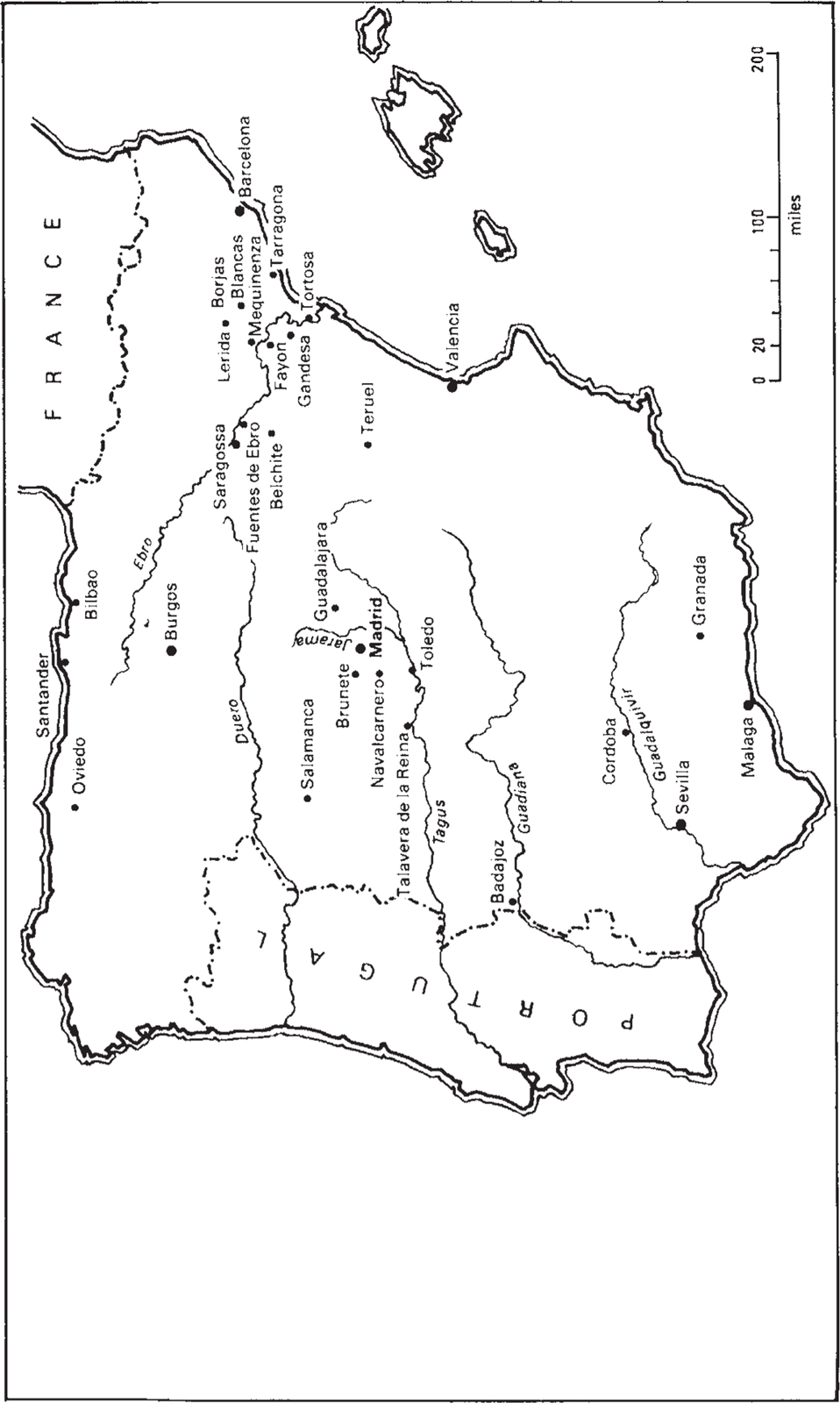
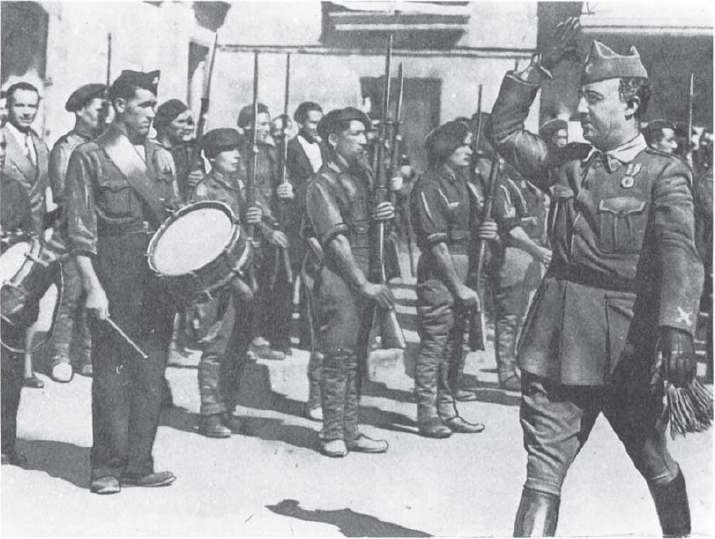
General Francisco Franco y Bahamonde inspects a guard of honour at Burgos in October 1936, following his appointment to the supreme command of the insurgents. Franco had enjoyed rapid promotion, founding his reputation for professional competence and personal coolness under fire in the savage Moroccan campaigns of the early 1920s. (Keystone)
Under the circumstances, it was the right wing, spurred to action by Calve Sotelos murder, that made the opening moves. The weekend of 17/18 July military uprisings broke out, with varying success, in all the main garrison towns of the Spanish mainland.
In the north, monarchist Navarra rallied to General Emilio Mola. In Andalucia, in the south, the capital, Sevilla, was taken over by a handful of troops led by the swashbuckling General Queipo de Llano y Sierra, himself a Republican at heart but violently anti-Communist. Crdoba and Granada also declared for the rebels who would be known as the Nationalists, but in Jaen and Mlaga the movement was suppressed, both centres voting solidly for the existing government. Most of Castilla, as well as the cities of Burgos, Salamanca and Avila, embraced the revolution, as did much of Galicia. Though predominantly Catholic, the Basques supported the Republic hoping thereby to achieve a measure of autonomy; their example was followed by the Catalans, who were the most left-wing people of the peninsula. In both Madrid and Barcelona, insurgent officers and troops were soon isolated by Communist mobs, and liquidated. Those who surrendered were speedily brought to triala mere formalityand as speedily executed.
Escaping by plane, piloted by an Englishman, Captain Bebb, General Francisco Franco y Bahamonde, leading member of the U.M.E., reached Tetuan, capital of Spanish Morocco on 19 July, and there, with the wholehearted support of the highly professional African Army proclaimed the Revolution, receiving also the full backing of the Khalifa, the local Moorish governor.
These turbulent mid-July days marked the beginning of a civil war, which was to last two years and nine months, a war to be remembered not so much for the brilliance of any individual campaign or commander, but rather for its appalling ferocity, and for fanatical, crusader-like belief, held by participants, in the justice of their own cause. Left and Right, alike, were convinced that they were fighting for civilization against the powers of darkness. This fanaticism led to heavy losses, and many of the battles compared for sheer butchery with those of the Western Front of 191418.
The Republican Army
It is a common, but erroneous, belief that the Spanish Army joined solidly with the insurgents, just as it is equally erroneous to state that the war was waged between the haves and the have nots. Though in Morocco the troops were almost unanimous in supporting their leader, General Franco, this was far from being the case in metropolitan Spain.
On 17 July the mainland army consisted of eight infantry divisions centred on Corunna, Saragossa, Burgos, Valladolid, Sevilla, Valencia, Barcelona, and Madrid, and one cavalry division, whose headquarters was also in Madrid. An infantry division was made up of two brigades (or regiments), each of two battalions.
Loyalties and ideals caused men of similar rank, from general to private soldier, to oppose each other, and the confusion and bloodshed of the first weekend was great. By the Monday, however, the situation had largely sorted itself out. It has since been estimated thatwith the exception of the African Army33,000 stood by the government, while 23,600 went over to the insurgents (Nationalists). On 17 July the officer corps totalled 8,500. By the 19th, some 3,500 had been killed or imprisoned by the Republicans, 2,000 had declared for the government, 3,000 for the Nationalists.
The para-military Guardia Civil, Asaltos and Carabineros, also split. The Nationalists were able to count on 14,000 Guardia Civil, 6,000 Carabineros and 500 Asaltos, while the Republic counted on nearly 20,000 Guardia Civil, 3,500 Asaltos, and 8,750 Carabineros.
Republicans could also muster groups of armed militia, men trained in urban and guerilla terrorist tactics who, by July 1936, had reached the impressive total of 15,000 Trotskyists and Anarchists, and 12,000 Communists. It did not help the Republics cause, however, that the militia were usually at daggers drawn with the para-military forces, even when these latter were amalgamated and renamed the Guardia Republicana. After some months, warring factions were once more reorganized, this time into a single body, known as the Ejrcito Popular Republicana (Peoples Republican Army), but this was achieved only with great difficulty, clashes occurring between Anarchists, who bitterly resented any form of regimentation or rank privilege, and Communists, who based their concept of service on Russian standards of iron discipline.
When it eventually took shape, the E.P.R. had three units of command: the section consisting of thirty men, the centuria of a hundred men, and the column of six centurias. However, by the end of 1936, this clumsy organization was superseded by the classic formations of the battalion, brigade, division, and eventually corps, the one variation being the Mixed Brigade of four infantry battalions, each battalion comprising three rifle companies and one medium machine-gun company, with its own artillery arm and supply and medical services.

